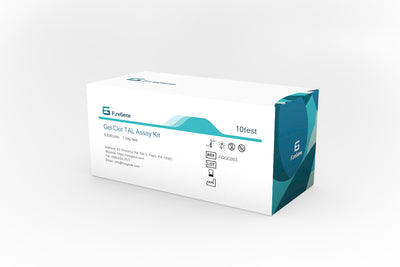
# Endotoxin Detection Using Gel Clot Assay Kit
## Understanding the Importance of Endotoxin Testing
Endotoxins are lipopolysaccharides (LPS) found in the outer membrane of Gram-negative bacteria. These toxic substances can cause severe reactions in humans, including fever, septic shock, and even death when introduced into the bloodstream. For this reason, endotoxin detection is crucial in pharmaceutical manufacturing, medical device production, and other healthcare-related industries.
## What is a Gel Clot Endotoxin Test Kit?
The Gel Clot Endotoxin Test Kit is a widely used method for detecting and quantifying endotoxins. This kit utilizes the principle of the Limulus Amebocyte Lysate (LAL) test, which is derived from the blood of horseshoe crabs. When endotoxins come into contact with LAL, they trigger a coagulation cascade that results in gel formation.
### How the Gel Clot Assay Works
The test procedure involves several key steps:
1. Sample preparation and dilution
2. Mixing the sample with LAL reagent
3. Incubation at a controlled temperature (typically 37°C)
4. Visual inspection for gel formation
The presence of a firm gel indicates a positive result for endotoxins, while liquid remaining in the tube suggests a negative result.
## Advantages of Gel Clot Endotoxin Testing
The Gel Clot method offers several benefits for endotoxin detection:
– Simple and straightforward procedure
– Cost-effective compared to other methods
– No requirement for specialized equipment
– High specificity for endotoxins
– Reliable qualitative and semi-quantitative results
## Applications in Various Industries
Gel Clot Endotoxin Test Kits find applications across multiple sectors:
### Pharmaceutical Industry
Used for testing:
– Injectable drugs
– Medical devices
– Biopharmaceutical products
– Parenteral nutrition solutions
### Medical Device Manufacturing
Essential for ensuring:
– Safety of implants
– Sterility of surgical instruments
– Quality of dialysis equipment
### Research Laboratories
Valuable for:
– Quality control in biological research
– Environmental monitoring
– Vaccine development
## Interpreting Test Results
Understanding the results of a Gel Clot test is crucial:
– Positive Result: Formation of a firm gel indicates the presence of endotoxins above the detection limit
– Negative Result: No gel formation means endotoxin levels are below the detectable threshold
– Invalid Result: If controls don’t perform as expected, the test should be repeated
## Quality Control Considerations
To ensure accurate results, several quality control measures should be implemented:
– Regular testing of positive product controls
– Verification of reagent sensitivity
– Proper storage conditions for test kits
– Training of personnel in aseptic techniques
– Documentation of all testing procedures
Keyword: Gel Clot Endotoxin Test Kit
## Comparing Gel Clot to Other Methods
While the Gel Clot method is reliable, it’s important to understand how it compares to other endotoxin detection techniques:
Method | Sensitivity | Quantification | Equipment Needed
Gel Clot | Moderate | Semi-quantitative | None
Chromogenic | High | Quantitative | Spectrophotometer
Turbidimetric | High | Quantitative | Turbidimeter
## Best Practices for Using Gel Clot Kits
To achieve optimal results with Gel Clot Endotoxin Test Kits:
– Follow manufacturer instructions precisely
– Maintain proper temperature control
– Use appropriate dilution techniques
– Handle samples with sterile techniques
– Record all observations accurately
– Validate methods according to regulatory requirements
## Regulatory Compliance
The Gel Clot method is recognized by major pharmacopeias:
– United States Pharmacopeia (USP)
– European Pharmacopoeia (EP)
– Japanese Pharmacopoeia (JP)
Compliance with these standards ensures that test results are acceptable for regulatory submissions.
## Future Developments in Endotoxin Testing
While the Gel Clot method remains a staple in endotoxin detection, emerging technologies are being developed:
– Recombinant factor C assays
– Advanced biosensor